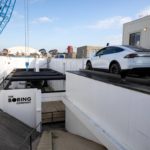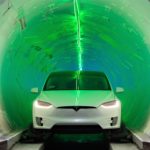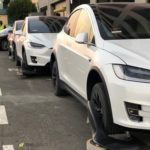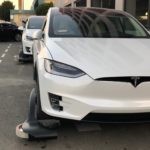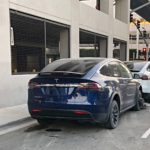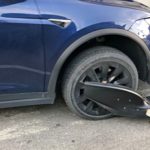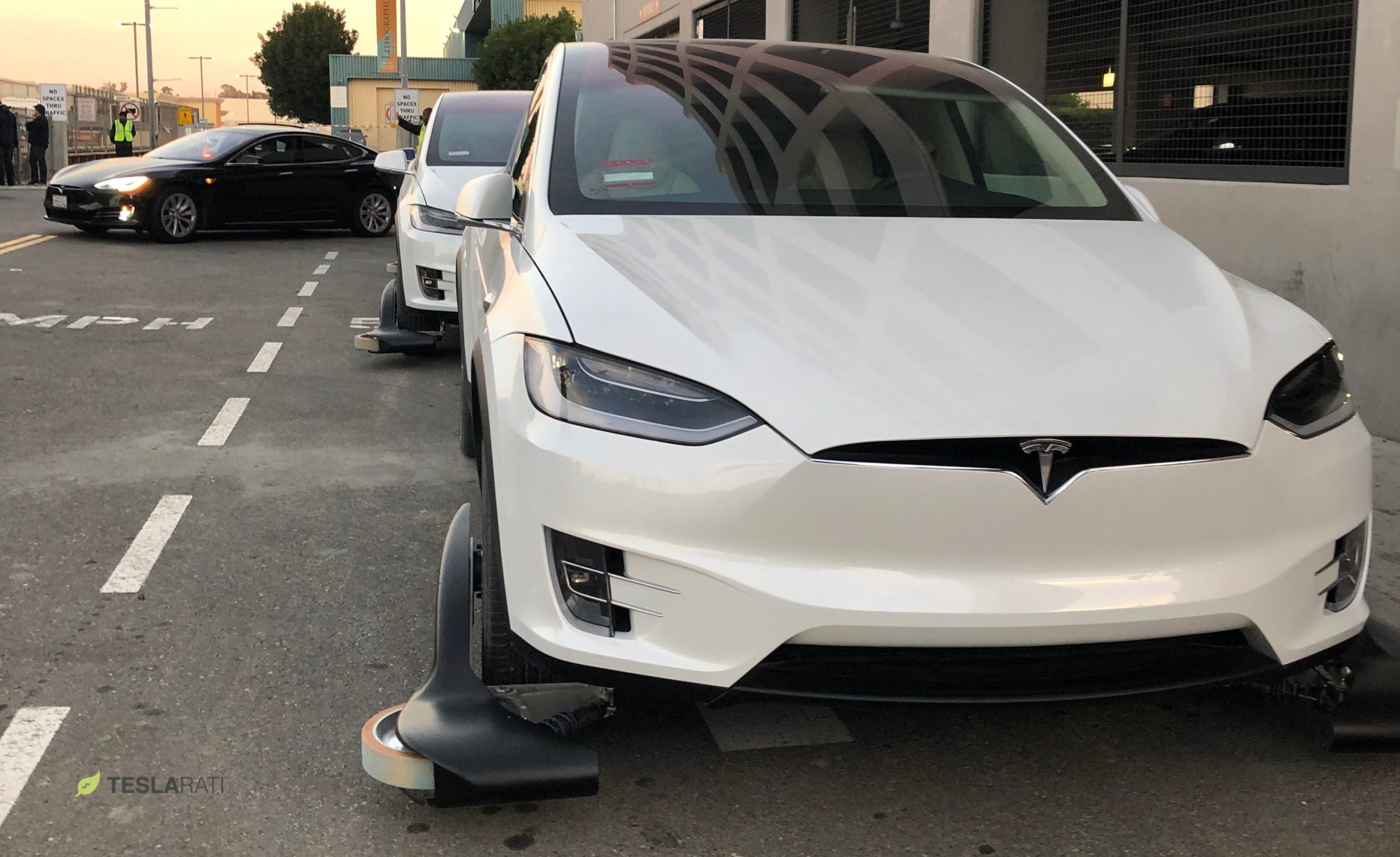
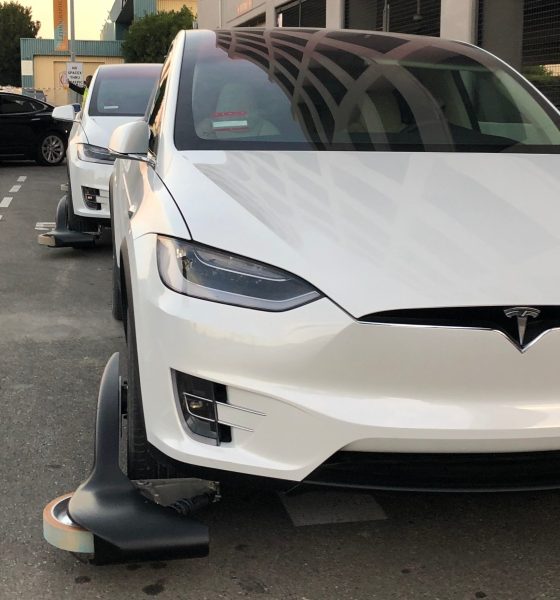
News
The Boring Company’s innovations take center stage at Hawthorne test tunnel opening event
Two years ago, Elon Musk founded a tunneling startup aimed at battling what he creatively described as “soul-destroying traffic.” Musk’s idea was simple — traffic congestion can be addressed by using underground tunnels where vehicles can travel at extremely fast speeds on electric skates. Hence, a startup aptly named The Boring Company was born.
Since then, the tunneling company has acquired a high-profile project in Chicago, developed low-cost bricks from tunneling rocks, and completed its first test tunnel. Constructed on the backyard of the SpaceX headquarters, the Boring Company’s Hawthorne test tunnel was unveiled on Tuesday in an opening party, complete with entertainment, fun activities, and a medieval watchtower overlaid with Boring Bricks.
Being smaller in diameter than traditional tunnels, The Boring Company’s projects are more cost-effective and faster to construct. Its 1.14-mile Hawthorne tunnel, for example only cost ~$10 million to build, including internal infrastructure, lighting, comms/video, safety systems, ventilation, and tracks. Conventional tunneling projects, which involve larger tunnels and traditional digging methods, could cost as much as $1 billion per mile.
Elon Musk conducted an information session to members of the press prior to the official start of the unveiling. During the meeting, Musk discussed some updates about the startup’s concepts. For one, Musk noted that The Boring Company had changed its idea of using electric skates to propel cars. Instead of using pre-made electric skates, the company is now using the vehicle as the skate itself.
“There won’t be a skate — no more skate. The vehicle is the skate,” Musk said.
- (Photo: Tom Cross/Teslarati)
- (Photo: Tom Cross/Teslarati)
- (Photo: Tom Cross/Teslarati)
- (Photo: Tom Cross/Teslarati)
- (Photo: Tom Cross/Teslarati)
- (Photo: Tom Cross/Teslarati)
Tesla Model X fitted with electric skates for transportation through The Boring Company’s Hawthorne test tunnel. (Photo: Tom Cross/Teslarati)
The Hawthorne test tunnel would be utilizing the Loop System, which is designed to accommodate cars and passenger pods. During the Q&A, Musk noted that the Loop is a step towards the eventual creation of Hyperloop, which utilizes pods traveling inside low-pressure tubes at speeds of up to 700 mph. “The loop is a stepping stone toward Hyperloop. Loop is for transport within a city. And Hyperloop is transport between cities,” Musk said.
Apart from referencing Hyperloop transportation, Musk further discussed other possible uses for The Boring Company’s technology. Reiterating an idea he expressed during a “fireside chat” in Los Angeles with LA Mayor Eric Garcetti, Musk noted that the Boring Co.’s tunnels could also be used for utilities such as water lines. Due to the tunnels’ construction and design, Musk stated that “If a water main breaks, it floods through the tunnel one end, and gets pumped out the other.” This would allow cities to address utility issues without much hassle.
Just like Musk’s other companies like Tesla and SpaceX, The Boring Company is in a constant process of innovation. The startup, for one, continues to design and develop its third-generation Tunnel Boring Machine. Once operational, the new TBM would be capable of digging 15 times faster than a conventional boring machine. Apart from using a fully-electric system to increase power, The Boring Machine is also designing the upcoming TBM’s cutter head to process more dirt. In yet another step away from convention, the tunneling startup is also creating reinforcement segments on site using the dirt excavated from the tunnel itself.
Musk has noted that The Boring Company’s tunneling projects are already attracting a lot of interest, stating that “we have more demand on tunnels than we can satisfy,” and that “we have people hounding us to invest nonstop.” In a flourish of classic Elon Musk humor, the Tesla and SpaceX CEO noted that “it’s kinda ridiculous how much interest we’ve had in investing in Boring Company.” Elaborating further, Steve Davis, the CEO of the Boring Company, added that the startup receives “greater than 5 and less than 20 requests per week from different municipalities and stakeholders.”

Elon Musk
Elon Musk’s X will start using a Tesla-like software update strategy
The initiative seems designed to accelerate updates to the social media platform, while maintaining maximum transparency.

Elon Musk’s social media platform X will adopt a Tesla-esque approach to software updates for its algorithm.
The initiative seems designed to accelerate updates to the social media platform, while maintaining maximum transparency.
X’s updates to its updates
As per Musk in a post on X, the social media company will be making a new algorithm to determine what organic and advertising posts are recommended to users. These updates would then be repeated every four weeks.
“We will make the new 𝕏 algorithm, including all code used to determine what organic and advertising posts are recommended to users, open source in 7 days. This will be repeated every 4 weeks, with comprehensive developer notes, to help you understand what changed,” Musk wrote in his post.
The initiative somewhat mirrors Tesla’s over-the-air update model, where vehicle software is regularly refined and pushed to users with detailed release notes. This should allow users to better understand the details of X’s every update and foster a healthy feedback loop for the social media platform.
xAI and X
X, formerly Twitter, has been acquired by Elon Musk’s artificial intelligence startup, xAI last year. Since then, xAI has seen a rapid rise in valuation. Following the company’s the company’s upsized $20 billion Series E funding round, estimates now suggest that xAI is worth tens about $230 to $235 billion. That’s several times larger than Tesla when Elon Musk received his controversial 2018 CEO Performance Award.
As per xAI, the Series E funding round attracted a diverse group of investors, including Valor Equity Partners, Stepstone Group, Fidelity Management & Research Company, Qatar Investment Authority, MGX, and Baron Capital Group, among others. Strategic partners NVIDIA and Cisco Investments also continued support for building the world’s largest GPU clusters.
News
Tesla FSD Supervised wins MotorTrend’s Best Driver Assistance Award
The decision marks a notable reversal for the publication from prior years, with judges citing major real-world improvements that pushed Tesla’s latest FSD software ahead of every competing ADAS system.

Tesla’s Full Self-Driving (Supervised) system has been named the best driver-assistance technology on the market, earning top honors at the 2026 MotorTrend Best Tech Awards.
The decision marks a notable reversal for the publication from prior years, with judges citing major real-world improvements that pushed Tesla’s latest FSD software ahead of every competing ADAS system. And it wasn’t even close.
MotorTrend reverses course
MotorTrend awarded Tesla FSD (Supervised) its 2026 Best Tech Driver Assistance title after extensive testing of the latest v14 software. The publication acknowledged that it had previously criticized earlier versions of FSD for erratic behavior and near-miss incidents, ultimately favoring rivals such as GM’s Super Cruise in earlier evaluations.
According to MotorTrend, the newest iteration of FSD resolved many of those shortcomings. Testers said v14 showed far smoother behavior in complex urban scenarios, including unprotected left turns, traffic circles, emergency vehicles, and dense city streets. While the system still requires constant driver supervision, judges concluded that no other advanced driver-assistance system currently matches its breadth of capability.
Unlike rival systems that rely on combinations of cameras, radar, lidar, and mapped highways, Tesla’s FSD operates using a camera-only approach and is capable of driving on city streets, rural roads, and freeways. MotorTrend stated that pure utility, the ability to handle nearly all road types, ultimately separated FSD from competitors like Ford BlueCruise, GM Super Cruise, and BMW’s Highway Assistant.
High cost and high capability
MotorTrend also addressed FSD’s pricing, which remains significantly higher than rival systems. Tesla currently charges $8,000 for a one-time purchase or $99 per month for a subscription, compared with far lower upfront and subscription costs from other automakers. The publication noted that the premium is justified given FSD’s unmatched scope and continuous software evolution.
Safety remained a central focus of the evaluation. While testers reported collision-free operation over thousands of miles, they noted ongoing concerns around FSD’s configurable driving modes, including options that allow aggressive driving and speeds beyond posted limits. MotorTrend emphasized that, like all Level 2 systems, FSD still depends on a fully attentive human driver at all times.
Despite those caveats, the publication concluded that Tesla’s rapid software progress fundamentally reshaped the competitive landscape. For drivers seeking the most capable hands-on driver-assistance system available today, MotorTrend concluded Tesla FSD (Supervised) now stands alone at the top.
News
Elon Musk’s Grokipedia surges to 5.6M articles, almost 79% of English Wikipedia
The explosive growth marks a major milestone for the AI-powered online encyclopedia, which was launched by Elon Musk’s xAI just months ago.

Elon Musk’s Grokipedia has grown to an impressive 5,615,201 articles as of today, closing in on 79% of the English Wikipedia’s current total of 7,119,376 articles.
The explosive growth marks a major milestone for the AI-powered online encyclopedia, which was launched by Elon Musk’s xAI just months ago. Needless to say, it would only be a matter of time before Grokipedia exceeds English Wikipedia in sheer volume.
Grokipedia’s rapid growth
xAI’s vision for Grokipedia emphasizes neutrality, while Grok’s reasoning capabilities allow for fast drafting and fact-checking. When Elon Musk announced the initiative in late September 2025, he noted that Grokipedia would be an improvement to Wikipedia because it would be designed to avoid bias.
At the time, Musk noted that Grokipedia “is a necessary step towards the xAI goal of understanding the Universe.”
Grokipedia was launched in late October, and while xAI was careful to list it only as Version 0.1 at the time, the online encyclopedia immediately earned praise. Wikipedia co-founder Larry Sanger highlighted the project’s innovative approach, noting how it leverages AI to fill knowledge gaps and enable rapid updates. Netizens also observed how Grokipedia tends to present articles in a more objective manner compared to Wikipedia, which is edited by humans.
Elon Musk’s ambitious plans
With 5,615,201 total articles, Grokipedia has now grown to almost 79% of English Wikipedia’s article base. This is incredibly quick, though Grokipedia remains text-only for now. xAI, for its part, has now updated the online encyclopedia’s iteration to v0.2.
Elon Musk has shared bold ideas for Grokipedia, including sending a record of the entire knowledge base to space as part of xAI’s mission to preserve and expand human understanding. At some point, Musk stated that Grokipedia will be renamed to Encyclopedia Galactica, and it will be sent to the cosmos.
“When Grokipedia is good enough (long way to go), we will change the name to Encyclopedia Galactica. It will be an open source distillation of all knowledge, including audio, images and video. Join xAI to help build the sci-fi version of the Library of Alexandria!” Musk wrote, adding in a later post that “Copies will be etched in stone and sent to the Moon, Mars and beyond. This time, it will not be lost.”
